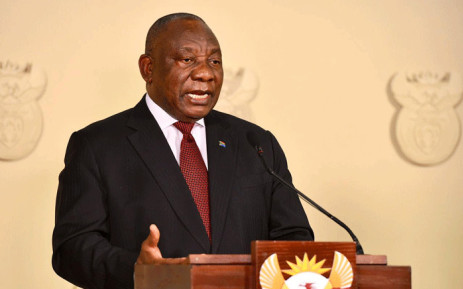
By Simon Norton, International Zinc Association Africa Desk
The rollout of infrastructure, along with energy, is a key part of President Cyril Ramaphosa’s Economic Reconstruction and Recovery Plan (ERRP). This infrastructure drive has mostly been met with skepticism, thanks to a government track record marred by corruption, bribery and sub-standard work that pays little heed to long-term sustainability.
If Eskom, as one example, has taught us anything, it’s that investing in infrastructure is one thing — maintaining it is another. Many agree the government’s approach is positive, but taxpayer rands will be wasted if the projects aren’t designed to last and end up falling apart a few years down the line.
As the country seeks to redress the economic dislocation of 2020, going back to old ways of doing simply won’t cut it. Across sectors, but particularly in construction and civil engineering, we need to prioritise long-term performance over short-term profiteering.
One of the ways to achieve this is to ensure that we do not skimp on corrosion protection, which is done with hot dip galvanising using zinc. In fact, the viability and longevity of infrastructure projects could be vastly improved by something as simple as relooking the way new build projects are specified.
That’s as true for heavy industry as it is for any other sector. In this instance, sustainability and longevity mean taking a view which prioritises long-term gains over short-term profiteering and understands that focusing on quality and performance in the present will have future dividends.
If the construction industry and civil engineering sector are to embrace such an approach, then they cannot afford to skimp on corrosion protection.
Why galvanizing is essential
It’s a known reality that significant time, energy and resources are spent on “patching” our infrastructure, rather than addressing the root cause of the problem — which is usually the use of cheap materials, substandard contractors and a faulty tender system.
Public infrastructure serves as a focused example of how long-term thinking could save money, create jobs and deliver a better outcome overall in South Africa. For example, if we were to vigorously promote and require in government tenders that, where appropriate, all steel used for infrastructure projects be galvanized, then we’re thinking long-term. Galvanized steel structures can have a lifespan of over 50 years in the right environment and offer exceptional performance at the coast. Hot dip galvanizing is only marginally more costly at the outset, but the savings in terms of long-term maintenance-free service are exceptional.
If we can get to a point where our public infrastructure lasts longer than at present and requires far less maintenance, the focus can shift to new build projects that will improve the general state of the economy and, by extension, the welfare of South Africans.
Hot dip galvanizing of steel structures and steel items such as concrete reinforcing steel is a cost-effective way to prevent premature corrosion of steel and to ensure a long life for steel in corrosive environments.
And South Africa is not short of those. The country has a coastline of over 2850 kilometres and an extensive, complex and vastly expensive infrastructure has developed along the coast over the past 100 years. Not to mention the vast steel infrastructure underground in the corrosive atmosphere of deep gold mines as well as coal and platinum mines — all of which need the corrosion protection provided by zinc galvanising.
Much of South Africa’s existing infrastructure is located in highly corrosive conditions, meaning that any steel is highly vulnerable to corrosion. So any steel structures can quickly become corroded, unsafe, and may have to be replaced in the short-term after only two to three years of life.
Short-term costs for long-term gains
With infrastructure lasting longer and requiring less maintenance, the State will be able to focus on new build programmes and other developmental issues, increasing the general welfare and wellbeing of all South Africans.
The private sector meanwhile can plough money saved on maintenance into expansion, potentially growing the employment pool. And with the economic destruction wrought by South Africa’s anti-Covid-19 lockdown having cost thousands of jobs, anything that brings new jobs should be welcomed.
Already geared for this
Fortunately, South Africa is well positioned to take a local-first approach to galvanizing. The country has several zinc mines, with the recently opened Vedanta Gamsberg Mine in the Northern Cape among the most notable, while in 2021 the new Orion zinc mine near Prieska will start operations.
There are a number of South African companies who specialise in hot dip galvanizing for a variety of purposes, ranging from structural steel to fencing, while continuous sheet galvanizers focus on roof sheeting and cladding for construction. If South Africa is to have any hope of economic recovery post-Covid-19, no sector of the economy can afford to do things the way they did before. While it may seem like a small thing, if South Africa is to deliver the new economy President Cyril Ramaphosa has promised, every potential piece of the puzzle has to be in place. And for the steel industry and civil engineering, that means not skimping on galvanizing
More news
- PART 2: CONCRETE IN THE DESIGN OF A UNIQUE LUXURY HOME IN GEORGE, SOUTH AFRICA
- PART 1: CONCRETE IN THE DESIGN OF A UNIQUE LUXURY HOME IN GEORGE, SOUTH AFRICA
- MVULE GARDENS, AFRICA’S LARGEST 3D-PRINTED AFFORDABLE HOUSING PROJECT
- PART 3: HARNESSING THE POTENTIAL OF HIGH SULPHUR FLY ASH IN CONCRETE PRODUCTION
- PART 2: HARNESSING THE POTENTIAL OF HIGH SULPHUR FLY ASH IN CONCRETE PRODUCTION

